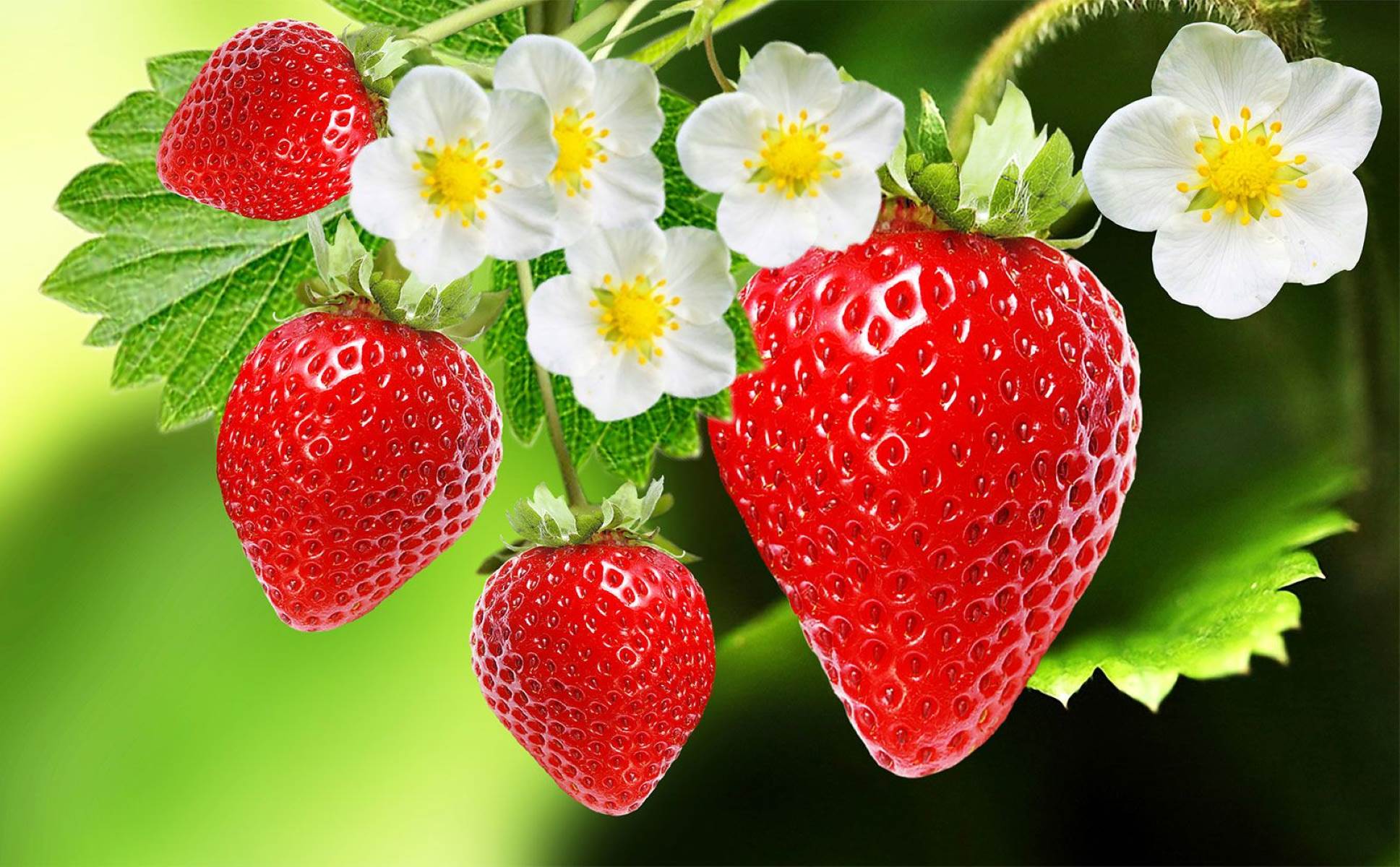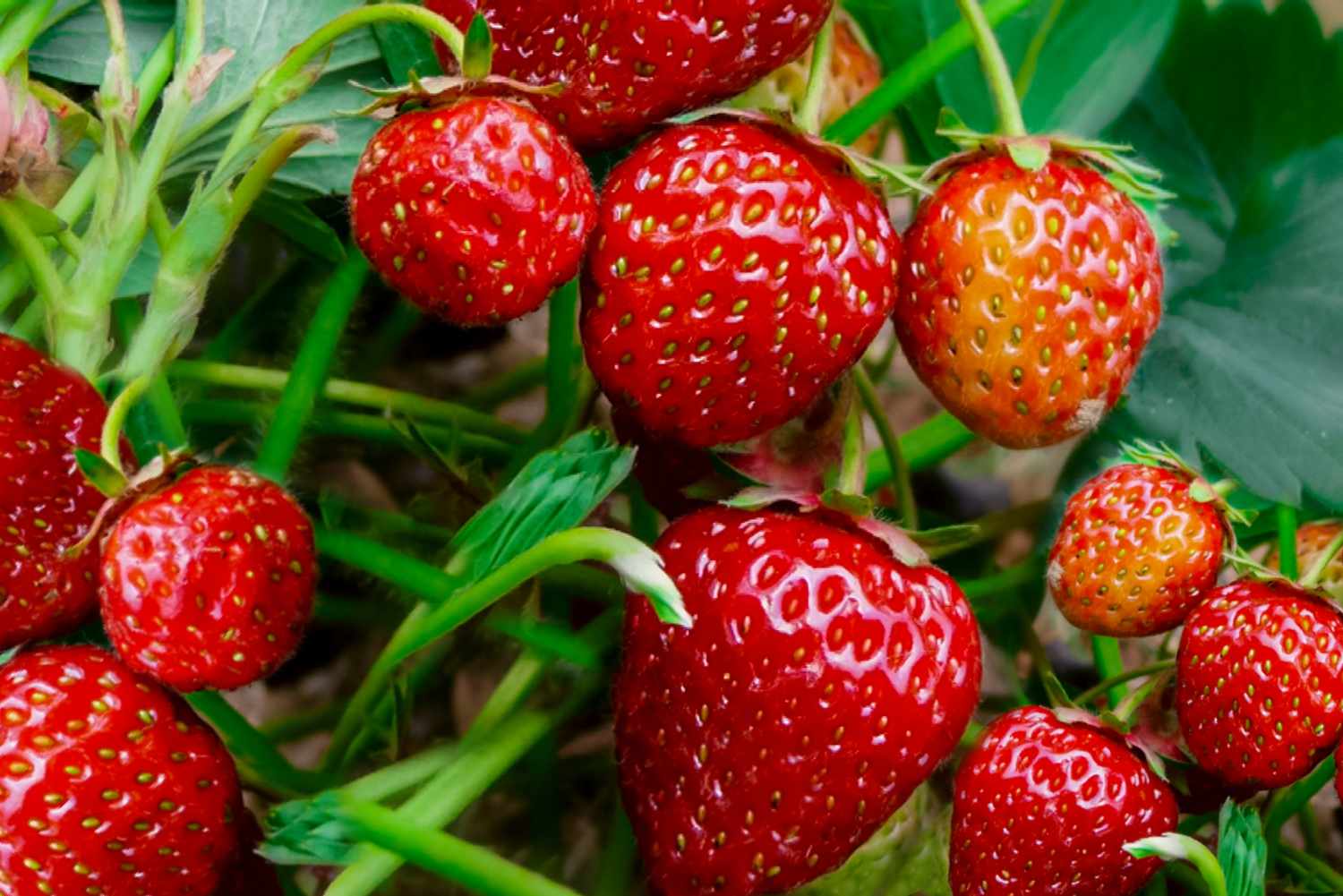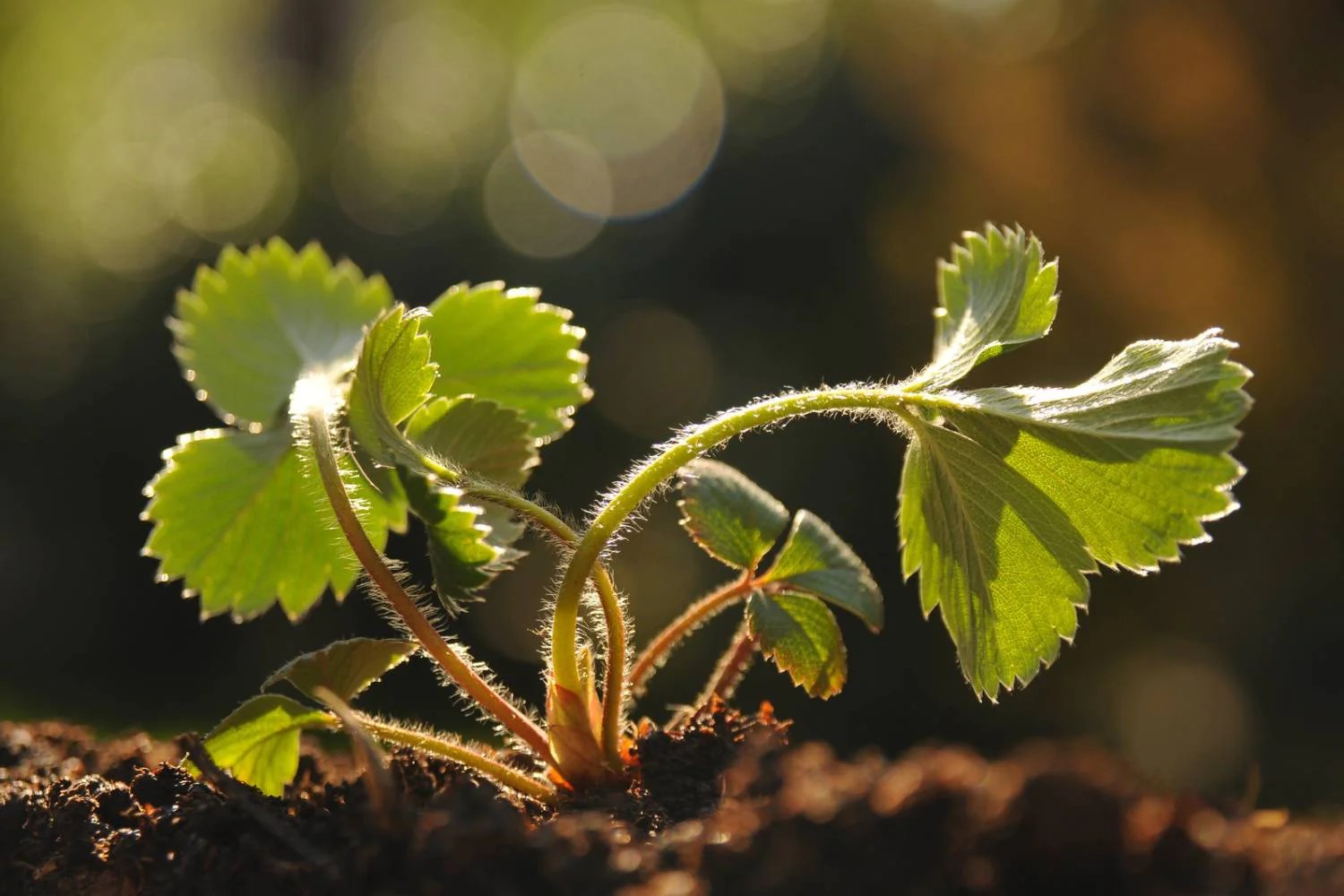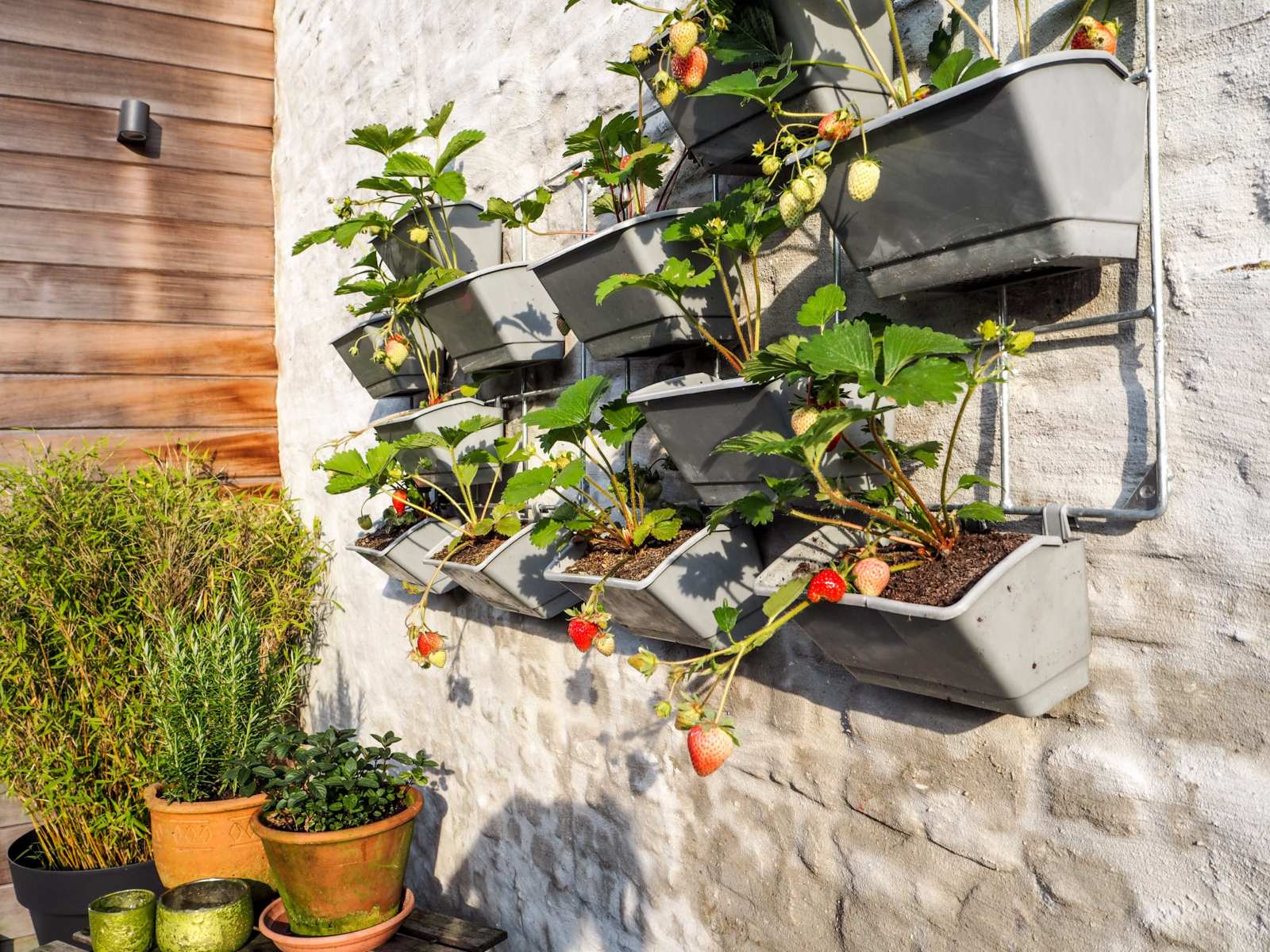Home>Garden Essentials>Where Are Strawberry Seeds


Garden Essentials
Where Are Strawberry Seeds
Modified: March 16, 2024
Looking to grow your own strawberries? Find out where to buy strawberry seeds and start your garden today!
(Many of the links in this article redirect to a specific reviewed product. Your purchase of these products through affiliate links helps to generate commission for Storables.com, at no extra cost. Learn more)
Introduction
When you think of strawberries, you probably envision a vibrant red fruit bursting with juicy sweetness. But have you ever wondered about the tiny seeds that adorn the surface of these luscious berries? Are they actually seeds or just small, insignificant blemishes? In this article, we will explore the anatomy of strawberries, debunk common misconceptions, and uncover the truth about strawberry seeds.
Strawberries have long been a beloved fruit by gardeners and food enthusiasts alike. They are a versatile ingredient in various culinary dishes and a delightful addition to a garden. But understanding the true nature of strawberry seeds can add a new layer of appreciation for these delicious fruits.
So, let’s dive in and explore the fascinating world of strawberry seeds.
Key Takeaways:
- Strawberry seeds are not the small gritty particles on the surface of the fruit, but are actually nestled within the juicy flesh, surrounded by the succulent mesocarp.
- Strawberries use flowers and runners for reproduction, and you can find their seeds by extracting them from ripe fruits, purchasing them, or collecting them from existing plants.
Read more: What Are The Seeds In Strawberries
The Anatomy of a Strawberry
Before we delve into the topic of strawberry seeds, let’s take a closer look at the anatomy of this delectable fruit. A strawberry is actually not a true berry but a pseudocarp, also known as an aggregate fruit. This means that the flesh of the fruit is derived from the receptacle, the thickened part of the flower stalk that holds the separate ovaries of the flower.
The outer skin of a strawberry is known as the exocarp, which is covered in tiny bumps called achenes. These achenes are what we often mistake for seeds. Each achene is actually a tiny fruit containing a seed, and they play a vital role in the reproduction of the strawberry plant.
Beneath the exocarp, we find the mesocarp, which is the succulent flesh that gives the strawberry its juicy texture and sweet flavor. As we cut into a strawberry, we can see the distinct white or pale green tissue known as the endocarp, which surrounds the achenes.
Understanding the different components of a strawberry will help shed light on the true nature of strawberry seeds and debunk some common misconceptions.
The Misconception about Strawberry Seeds
There is a prevalent misconception about strawberry seeds that often confuses many people. It is commonly believed that the small, gritty particles that cover the surface of a strawberry are the actual seeds. This misconception stems from the appearance of the achenes, which resemble typical seeds found in other fruits.
However, the truth is that these achenes are not the true seeds of a strawberry. They are instead the fruit of the strawberry plant. Each achene contains a tiny seed inside, but it is not the main reproductive structure of the strawberry.
This misunderstanding might arise from the fact that the achenes are worthy of attention due to their texture and appearance. They are often slightly darker than the flesh of the strawberry and have a rough, gritty texture. This can lead people to assume that they are the actual seeds of the fruit.
Now that we have cleared up this misconception, let’s explore the truth about strawberry seeds and their role in the plant’s reproduction.
Do Strawberries Actually Have Seeds?
Contrary to popular belief, strawberries do indeed have seeds. While the achenes on the surface of a strawberry may not be the main seeds, they are still an integral part of the strawberry’s reproductive structure.
The true seeds of a strawberry are located on the outside of the achenes, within the actual flesh of the fruit. These seeds are small and often difficult to see, as they are embedded within the juicy mass of the strawberry. Unlike the achenes, the true seeds are not visible to the naked eye and do not have the recognizable textured appearance.
So, the next time you enjoy a juicy strawberry, remember that you are also consuming the true seeds of the fruit, albeit in a less noticeable form.
Now that we know that strawberries do have seeds, let’s uncover the truth about how strawberries are reproduced.
The Truth about Strawberry Seeds
Now that we understand that strawberries do have seeds, let’s explore the truth about strawberry seeds and their role in the plant’s reproduction.
Strawberries are fascinating when it comes to their reproductive process. They are not only delicious fruits but also plants that use various methods to reproduce and spread their genetic material.
The true seeds of a strawberry are nestled within the juicy flesh of the fruit. These seeds are produced in the ovaries of the flower, which are fertilized by the pollen from other strawberry plants. The fertilized seeds develop within the fruit and mature over time.
However, it’s important to note that strawberries have a unique method of reproduction known as vegetative propagation. This means that strawberries can also reproduce without the need for seeds.
Strawberry plants produce runners, also known as stolons, which are long, slender stems that grow outward from the main plant. These runners can extend several feet and produce small plantlets, which are genetically identical to the parent plant.
These plantlets develop roots of their own and can grow into fully mature strawberry plants. This vegetative propagation is a form of asexual reproduction, allowing strawberries to rapidly spread and create new plants without the need for seeds.
So, while strawberries do have true seeds, they are also capable of reproducing through vegetative propagation, ensuring the continuation of their species.
Now that we know the truth about strawberry seeds and their unique reproductive methods, let’s explore where we can find these fascinating seeds.
When looking for strawberry seeds, check the surface of the strawberry. They are the small, yellow specks on the outside of the fruit.
How are Strawberries Reproduced?
Strawberries have a remarkable ability to reproduce through multiple methods, ensuring a successful continuation of their species. Let’s explore the different ways strawberries are reproduced.
One of the primary methods of strawberry reproduction is through the use of flowers. Strawberries are flowering plants, and their reproduction begins with the pollination of their flowers. Bees and other insects are attracted to the flowers and aid in the transfer of pollen from the stamen (male reproductive organ) to the pistil (female reproductive organ) of the same or different flowers.
Once pollination occurs, the ovaries within the flowers begin to develop into fruits, which we know as strawberries. These fruits contain the seeds of the strawberry plant, ensuring the dispersal of genetic material and the potential for new plants to grow.
Furthermore, strawberries have the unique ability to reproduce through vegetative propagation. As mentioned earlier, strawberries produce runners or stolons, which are elongated stems that grow outwards from the main plant. These runners have nodes along their length, and at each node, new plantlets can form.
These plantlets, known as daughter plants, are genetically identical to the parent plant. They sprout roots at the nodes and establish themselves as independent strawberry plants, capable of producing their own flowers and fruits.
This vegetative propagation allows strawberries to rapidly spread and establish new plants without relying solely on the production of seeds. It is an efficient method of reproduction that ensures the survival and expansion of the strawberry species.
So, strawberries utilize both sexual reproduction through flowers and asexual reproduction through vegetative propagation to ensure a successful and diverse population of plants.
Now that we understand how strawberries are reproduced, let’s explore where we can find their precious seeds.
The Role of Strawberries in Reproduction
Strawberries play a crucial role in their own reproduction and the propagation of their species. Let’s delve into the role of strawberries in the reproductive process.
As flowering plants, strawberries rely on their flowers to initiate the reproduction process. The flowers of a strawberry plant contain both male and female reproductive parts. The male parts, known as the stamens, produce pollen, while the female parts, known as the pistils, contain the ovaries where the seeds develop.
When a strawberry flower is visited by a pollinator, such as a bee or other insects, they inadvertently pick up pollen from the stamens. As the pollinator moves from flower to flower, it transfers the pollen to the pistils of other flowers.
This transfer of pollen is crucial for successful fertilization. Once the pollen reaches the pistil, it travels down the pistil to the ovaries. Fertilization occurs, and the ovaries develop into the familiar juicy red fruits we know as strawberries.
Inside these fruits, the seeds mature and await an opportunity to disperse and germinate, thereby giving rise to new strawberry plants. Some strawberries rely on animals or birds to eat their fruits and then subsequently scatter the seeds through their droppings. Others simply allow the fruits to fall to the ground, where environmental factors such as rain and wind aid in seed dispersal.
All in all, strawberries have evolved a clever reproductive strategy that involves attracting pollinators, producing delicious fruits to house and protect the seeds, and utilizing external factors to disperse the seeds and prepare them for germination.
Understanding the critical role that strawberries play in their own reproductive process allows us to appreciate their strategic adaptations for successful reproduction.
Now that we recognize the importance of strawberries in reproduction, let’s explore where we can find their precious seeds.
Where to Find Strawberry Seeds
If you’re fascinated by strawberries and want to explore the world of strawberry seeds, you might be wondering where exactly you can find them. While the seeds themselves may not be readily visible to the naked eye, there are a few places where you can find and extract strawberry seeds for various purposes.
The most accessible and common place to find strawberry seeds is within the ripe fruits themselves. When you cut open a strawberry, you’ll notice numerous tiny yellow or tan-colored specks scattered throughout the flesh. These specks are the achenes, which house the actual seeds of the strawberry plant.
One way to extract strawberry seeds is by gently removing the achenes from the fruit. You can do this by scraping the surface of the strawberry with a spoon or using your fingers to pluck them off. The achenes can then be dried and stored for future use, such as planting or sharing with other gardening enthusiasts.
Another method to obtain strawberry seeds is through purchasing commercially available strawberry seeds or seedlings. Many nurseries and garden centers offer a wide variety of strawberry seeds or young plants that you can start growing in your own garden.
Additionally, if you have existing strawberry plants in your garden, you can collect the seeds from the ripe fruits by allowing a strawberry to fully ripen and become overripe on the plant. The berries will naturally release their seeds, which you can collect and dry for future use or propagation.
It’s worth noting that not all strawberry varieties produce seeds that are suitable for germination. Some commercial strawberries are bred for their flavor and characteristics, but their seeds may not produce the same traits in future plants. For more reliable results in growing strawberries from seeds, it’s often recommended to purchase specific strawberry seed varieties from reputable sources.
So, whether you’re harvesting seeds from ripe strawberries, purchasing them from a nursery, or collecting seeds from your existing plants, there are various avenues to obtain strawberry seeds to experiment with and explore their potential.
Now that we know where to find strawberry seeds, let’s discover how to successfully harvest and save these precious seeds for future use.
Harvesting and Saving Strawberry Seeds
Harvesting and saving strawberry seeds is a rewarding endeavor that allows you to grow your own strawberry plants and experience the joy of nurturing them from seed to fruit-bearing plants. Here are some steps to help you successfully harvest and save strawberry seeds.
1. Choose Ripe and Healthy Strawberries: Select ripe, healthy strawberries from your garden or purchase them from a local market. Look for fully ripe berries with vibrant colors and firm flesh, as this indicates that the seeds inside are mature and ready for harvesting.
2. Extract the Seeds: Cut the strawberries in half or use your fingers to gently remove the achenes from the fruit. The achenes are the small, seed-like structures on the outer surface of the strawberry. Place the extracted achenes in a bowl or on a paper towel for further processing.
3. Clean and Rinse the Seeds: To remove any fruit remnants, rinse the extracted achenes under running water. Gently swish them around in a bowl of water and drain to ensure they are clean and free from any pulp or debris.
4. Dry the Seeds: After rinsing, place the cleaned achenes on a paper towel or a plate lined with parchment paper. Allow them to air dry in a cool, well-ventilated area for several days or until they are completely dry. This step ensures that the seeds are properly preserved for long-term storage.
5. Store the Seeds: Once the seeds are dry, transfer them to a clean, dry container such as a small envelope or a glass jar with an airtight lid. Label the container with the strawberry variety and the date of harvest. Store the seeds in a cool, dark place, such as a refrigerator or a seed storage box, to maintain their viability for future use.
6. Germination Test: Before planting the seeds, it’s advisable to conduct a germination test to determine their viability. Moisten a paper towel, place a few seeds on it, fold the towel, and keep it in a warm place. Check the seeds regularly for signs of germination. If a high percentage of seeds sprout, they are ready for planting.
When planting strawberry seeds, follow the specific germination and planting instructions for the variety you are growing. Keep in mind that growing strawberries from seed can be a longer process compared to propagating them through established plants or runners.
By following these steps to harvest and save strawberry seeds, you can cultivate your own unique strawberry plants, propagate different varieties, and enjoy the satisfaction of nurturing plants from seed to delicious fruits.
After learning about harvesting and saving strawberry seeds, let’s conclude our exploration of strawberries and their fascinating world.
Read more: How To Seed Strawberries
Conclusion
Strawberries are not just a delicious treat; they are intricate plants with a captivating reproductive process. Throughout this article, we have debunked misconceptions, explored the anatomy of strawberries, and uncovered the truth about strawberry seeds.
While the small, gritty achenes on the surface of strawberries may be mistaken for seeds, they are actually tiny fruits containing seeds. The true seeds of a strawberry are within the flesh of the fruit, surrounded by the succulent mesocarp.
Strawberries use various methods for reproduction, including the pollination of flowers and vegetative propagation through runners. The flowers play a vital role in the production of fruits that house the seeds, ensuring the dispersal of genetic material and the growth of new strawberry plants.
To find strawberry seeds, one can extract them from ripe fruits, purchase commercially available seeds, or collect them from existing plants. Harvesting and saving strawberry seeds involves selecting ripe strawberries, extracting the achenes, cleaning and drying the seeds, and storing them properly for future use.
With patience and care, you can grow your own strawberry plants from seed, experience the joy of watching them flourish, and savor the fruits of your labor.
As you embark on your strawberry-growing journey, remember the intricate process of pollination, the importance of the delicate flowers, and the remarkable ability of strawberries to reproduce through both sexual and asexual means.
So, the next time you enjoy a luscious strawberry, take a moment to appreciate the intricate world of seeds, flowers, and reproduction that has culminated in that delectable bite.
Happy strawberry growing!
Frequently Asked Questions about Where Are Strawberry Seeds
Was this page helpful?
At Storables.com, we guarantee accurate and reliable information. Our content, validated by Expert Board Contributors, is crafted following stringent Editorial Policies. We're committed to providing you with well-researched, expert-backed insights for all your informational needs.














0 thoughts on “Where Are Strawberry Seeds”